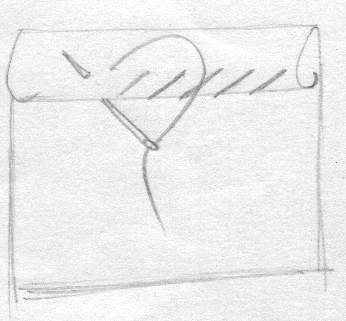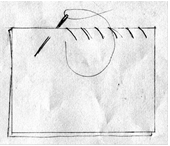Fashion
is something we deal with everyday. In today’s world each and every person
is conscious about what he is wearing
,his looks etc. Every one likes to look good and the only medium for looking
good is clothes. A perfect clothing can make any imperfect figure look good.
What
is fashion?
Fashion
is a very vast term. Fashion is a state of mind. Fashion is a form of free
speech. Fashion talks, it express one's
own self. It’s very difficult to define fashion. Most of all fashion is about
being comfortable with ones self, translating self-esteem into a personal
style. Fashion is a mean of communication. It tells each and every thing about
the person who wears it. It indicates the person’s status level. Fashion is
about change that is necessary to keep life interesting.
. There are many deformities in a natural
human body. If people are always nude then they will feel ashamed of one
another due to many weak points they have e.g. scars on body, full or flat
breasts, fat or thin body etc. To cover these defects in a human body fashion
is required .It communicates things like social status and sex as well as
enhancing attractiveness. Fashion is not only restricted to our clothing but
also includes our hairstyles, footwear, jewellery, way we smoke, bodily decoration
such as piercing, tattooing etc..
Fashion
is not what we wear but how we wear. E.g. a normal pant is not into fashion but
ways like folding it from below, making embroidery on it, making some
patchwork, opening a slit, cutting the belt etc is in fashion.
Importance
of fashion
Clothes indicate occupation, rank, gender etc Fashion is
revealing so it can be used to express ones self. People judge others by what
they is wearing. Clothes reveal what group’s people are in. Today a personality
is judged by what he is wearing and not by his educational qualifications.
People will always prefer talking to a guy who is wearing a decent blazer and
looking up to date even if he has no educational qualifications. But will avoid
talking to a shabby looking scholar.
Fashion
is the way of measuring a mood that can be useful in many aspects, culturally,
socially even psychologically. A right fashion indicates your occupation. For
instance, a businessman might look as a boy with funky clothes, colored hairs
and multiple piercing Acceptance or rejection of a style is a reaction to the
society we live in.
Occupation,
Status and Purpose of Clothing
Clothes protect us from
climatic conditions like cold, rain etc. Clothes should be worn according to
the climate. One cannot wear a sweater in summer, or a raincoat when it’s not
raining. Clothes express your inner feelings. If you are wearing a sweater the
opposite person will definitely come to know that you are feeling cold.
Status
Symbols
Those with high status
occupations will wear the clothes they think others expect them to wear. They
will not wish to experience role conflict by wearing the incorrect clothing.
Branded and designer wears are in trend if high society today. Even if a
renowned designer manufactures a very normal shirt it has a great demand. It’s
not the demand of the shirt but it’s the demand of the designers name in the
market. People feel proud to say that they are wearing a shirt exclusively
designed by Abhay Samant or whosoever
the designer might be.
Birth
of fashion.
Evolution: We use clothes to protect
our selves from different vagaries of climate, to look good etc but what led to
the evolution of clothes since the Stone Age……….
It
is a common belief that clothes came into being to protect one self from the
climate but this belief may be untrue as we see through this point.
For
protection against climate?
Two
thousand years before people in England were not used to wearing clothes and
they never felt a need to do so in spite of very cold climate in England. It
was certainly not a necessity.
Till
the last century tribes in different cold regions used to stay stark nude as
they were used to the climatic condition of the region. Several tribes in the
hilly and remote region of India and Africa too have the same practice.
Particularly Naga and Bali tribes follow the same custom till date.
Even
the women folk are bare till waist.
Though our face is too sensitive we do not
cover it, this shows that clothes are not a necessity.
For
Self Dignity?
Different studies revealed that different
countries and regions, religions and faith have had their own customs in way of
clothing. A few centuries ago when different parts of the world were not
accessible to each other each region had its own unique style and code of dressing.
With the advent of transport and communication facilities people traveled
across the globe, exchanged ideas and exchanged each others style and code of
dressing.
European females felt it below their dignity
to be seen bare feet. Even in their houses they have their footwear on but have
no hesitation in revealing their cleavage to the maximum.
It
is considered common for the fishermen and tribes to wear only napkins around
their groins but if any white-collar man does the same it is considered a taboo.
In
western countries striptease dance club have a place of pride for mischievous
night where women stripe off their costumes one by one till they are completely
nude. A few stage shows have women performing nude on stage and mingling in the
audience.
The
Rio carnival is a tradition followed in Brazil where women have crazy costumes,
which are more revealing than covering
So
to sum it up all costumes are not necessarily a means of self-dignity.
From
above mentioned things we come to a conclusion that need for clothes is more
psychological than physical.
How the clothes came into being
The need for clothes can be traced to
the psychological need for looking good and beautiful. Before the clothes came
into being, body painting and tattooing were practiced to look good
Let us have a look at how it changed form
Since
Stone Age man started to struggle for looking good let us see how this struggle
led to evolution of clothes
Body
Coloring: - The Stone Age man started using ash, mud, and different colors of
soil to color their body. But this method of coloring was temporary and time
consuming. So he started making blocks of different images such as sun, moon,
stars, hills, trees etc for looking good
Tattooing:
- to make the color long lasting and effective he started coloring his body
with different oils extracted from uses of plants and fats of different animals
but this color too used to fed in a few days.
So
to give a permanent effect man started tattooing his body with the help of fish
bones, pointed stones and animal teeth. He used to tattoo his body with the
images like flowers animals God sun, moon, hills, trees etc.
The
next step was coloring this tattoos with different colors but these colors were
also not long lasting, so a process of filling permanent colors during
tattooing was evolved Tattooing is practiced even today in various forms. The
custom of tattooing was so much accustomed to that each and every body was been
colored and people came to know that body looks beautiful when it was
decorated.
The
stage of evolution in fashion was weaving of rings and garlands made up of
flowers fish bone animal bones etc. The ancient people in Brazil and South
Africa used to pierce their lips in the center and the Equinox people staying
on the bank of the river Mackenzie used to pierce their chicks. People in north
America and Samoa in Pacific ocean and Tahiti Islands thought that there was
real beauty in broad forehead .So people started making the foreheads broad by
applying pressure on the fore head, soon after birth. The females in Hautentaut
felt that there was more beauty in big breasts. So they used to pull their
breasts, some women pulled their breasts so long that the child strapped to the
back suckle the milk right from its position.
Next step was to color different items put on the body with different color shades. Certainly strings made up of plants used to tie up these things together were also colored with different color such as re yellow blue etc.People started becoming fed up of this excruciatingly painful way of looking good. So now they thought of decorating their bodies by using different things. So they used to put different things in the holes pierced in the body. Australians used to put shells on the holes pierced in their nose and Papuans used to put small and rotund bones in the holes of their nose. The Brazilians used to put bones in the holes of their lower lips Even the African used to put feathers on their head. Some tribes used to hang Elephant tusks on their hands and legs.
As
time progressed barks of trees were used to decorate the body this led to
weaving of different barks of different colors to add variety. This gave birth
to the cloth, which was made similar to the mat, by criss – cross weaving. This
was cloth in its earliest form.
Different
people used this by tying it around the waist or necks, and around their chest.
Some even tied it around their head. People in that time used to stay in large
groups. This custom was slowly and steadily transformed from one group to the.
So after watching each of the tribes started filling ashamed and started
practicing the same custom. This custom progressed in such a way that people
felt ashamed to show their groin parts and started covering them with clothes.
This woven mat like cloth was transformed and improved slowly and steadily into
cloth.
The private parts of
the body were always covered with cloth and provided protection from the
climate .So the body became accustomed to the cloth and thus cloth became a
necessity. This is how the cloth, which was evolved for looking good, became an
indispensable necessity

































